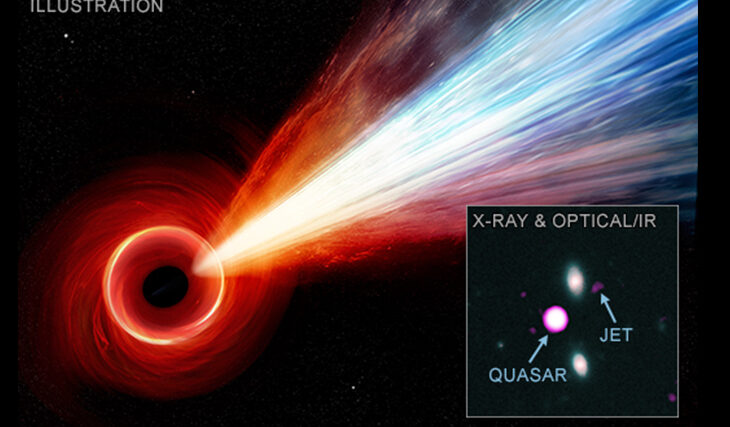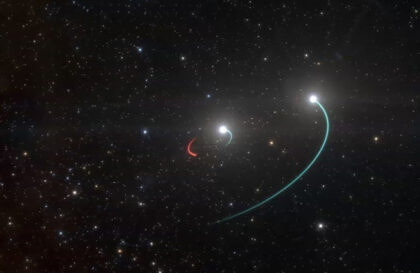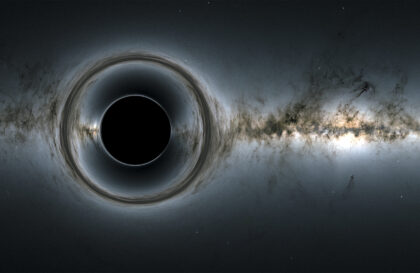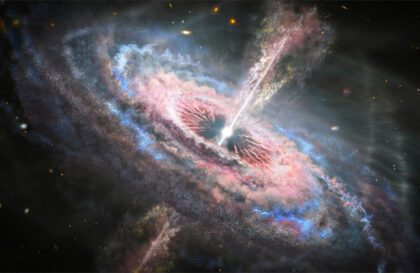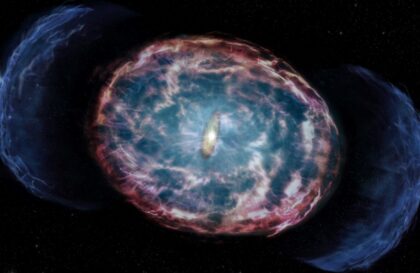Astronomers using NASA’s Chandra X-ray Observatory have found evidence of a long jet of particles emanating from a supermassive black hole in the early stages of the universe. If confirmed, this would be the first X-ray detected jet emanating from a supermassive black hole at such a great distance – about 12.7 billion light-years from Earth. This jet could help unravel the mysteries of the formation of the most massive black holes in the early periods of the universe.
Astronomers wonder how supermassive black holes could build up their mass so quickly and reach such magnitudes in the early stages of the universe.
Despite their strong gravity and intimidating nature, black holes don’t necessarily devour everything in their vicinity. A black hole is like a children’s carousel that spins too fast, preventing the child from reaching the center. Material orbiting a black hole in an accretion disk must lose energy and speed in order to be able to pass through the event horizon, the point of no return. In this process, magnetic fields play a key role, causing a jet of particles, which contributes to the loss of energy and, as a result, an increase in the growth of the black hole.
This jet originates from a quasar, which is a rapidly growing supermassive black hole and has been named PSO J352.4034-15.3373 (or PJ352-15 for short). This quasar is at the center of a young galaxy and is one of only two powerful quasars detected in radio waves in the first billion years after the Big Bang. Its mass is about a billion times the mass of the Sun.
To detect X-rays, astronomers conducted a three-day observation of the PJ352-15 quasar using the Chandra X-ray Observatory, which has a high resolution. The jet is so big that it would easily cut our galaxy lengthwise. The length of the jet in the X-ray range was about 160,000 light years, the size of the Milky Way is about 100,000 light years.
PJ352-15 sets several astronomical records:
- this is the longest jet detected in the first billion years after the Big Bang, which has a length of about 5000 light years, confirmed by radio observations,
- PJ352-15 is about 300 million light-years further away than the most distant X-ray jet ever recorded. The light detected in this jet was emitted when the universe was only 0.98 billion years old, less than one-tenth of its current age.
Image credit:
https://chandra.harvard.edu
